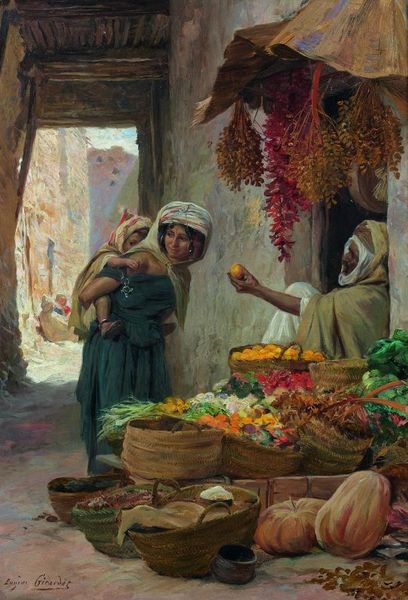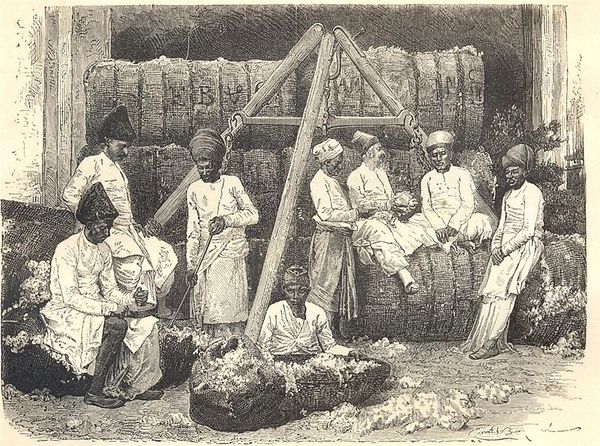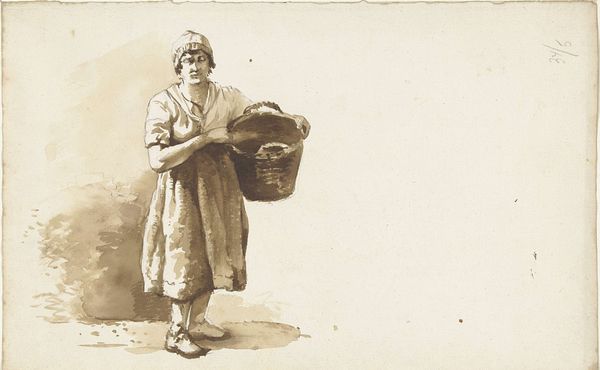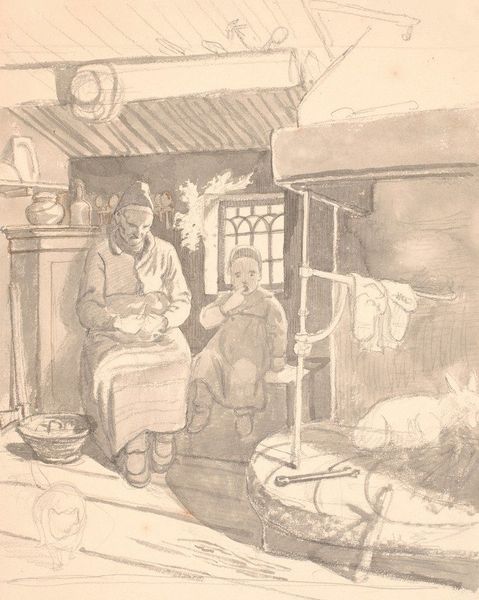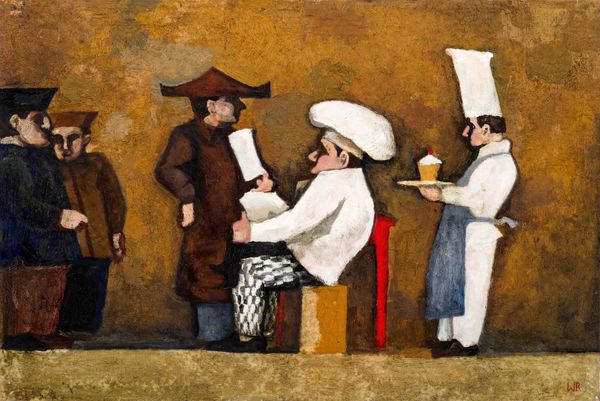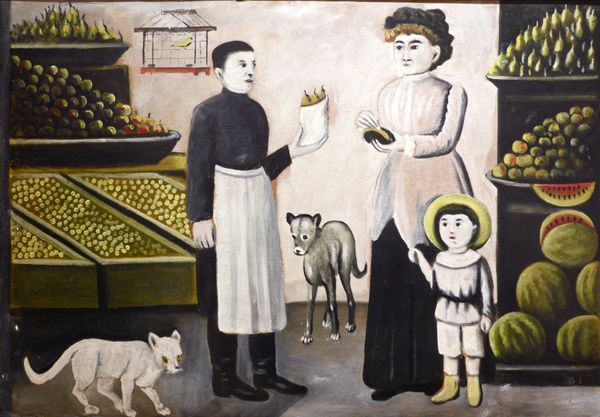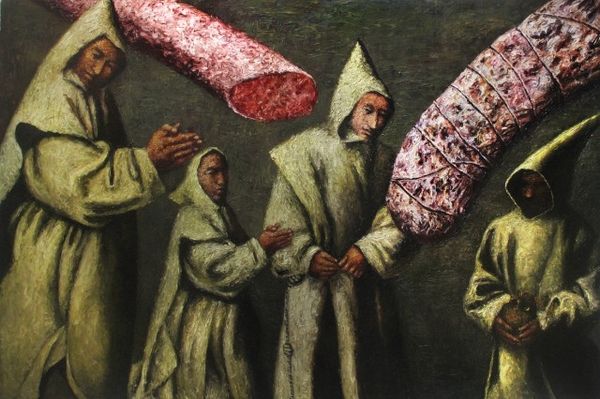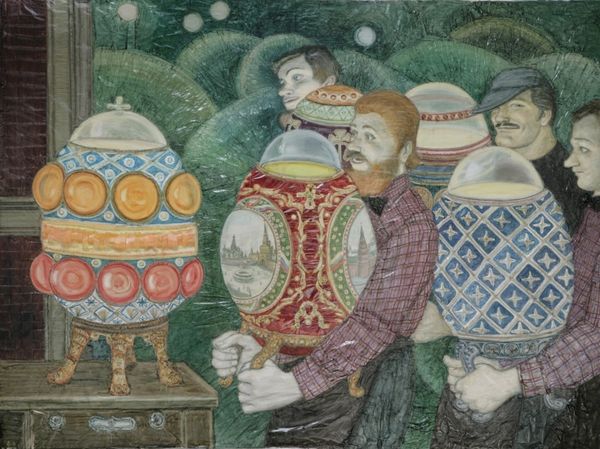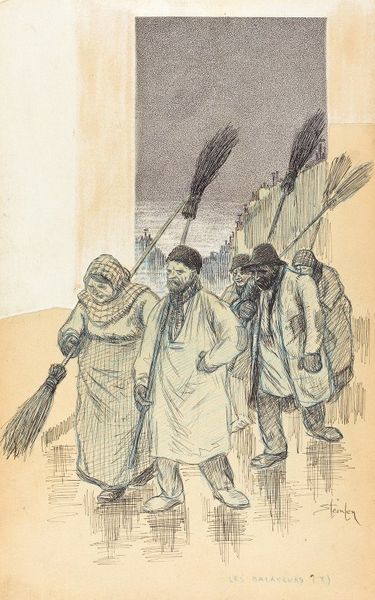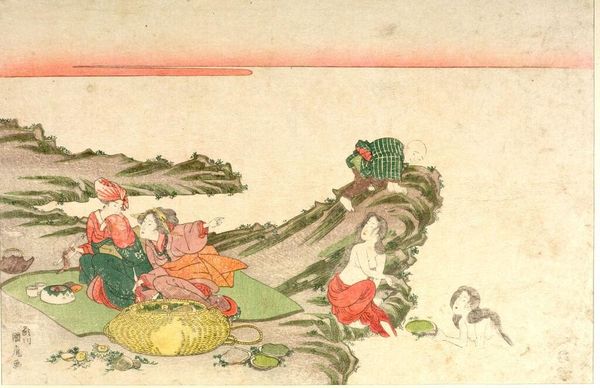
painting, oil-paint
#
portrait
#
painting
#
oil-paint
#
landscape
#
figuration
#
social-realism
#
oil painting
#
genre-painting
Dimensions: 80 x 100 cm
Copyright: Public domain
Editor: So here we have Niko Pirosmani's "Sanitary Inspector Woman of the Market," painted around 1916, using oil. I find the figures fascinatingly rigid. What draws your eye in this piece? Curator: Well, focusing on materials and process, the starkness arises partly from Pirosmani’s unusual choice of painting on oilcloth. How might this material choice reflect the socio-economic conditions of his time? Oilcloth, cheaper than canvas, speaks volumes about Pirosmani's context, the labor involved in creating art accessible to the working class, and a rebellion against the established art world. Editor: That’s interesting, I hadn’t considered that. I was mostly looking at the subjects. So, it wasn't just an aesthetic decision, but one deeply intertwined with access to materials and social class? Curator: Precisely! And look closely – the seemingly simple composition, the repetitive pumpkins and pears, they’re not just still life elements. Think about the work involved in cultivating and selling these goods, the market as a site of exchange, not just of goods, but also of labor and social interactions. Editor: It challenges the idea of high art. What do you mean? Curator: Where traditional art often depicts aristocratic life or idealized landscapes, Pirosmani focuses on the everyday reality of working-class people in Tbilisi. The materials he uses, the scenes he portrays, democratize art. This moves it away from being only for the elite. Do you think there's commentary on labour in the composition? Editor: The arrangement feels deliberate but naive. I now appreciate it depicts labour of cultivation, sales and, I assume from the title, regulation of those labors. This consideration transforms my perception entirely. Curator: Exactly! By acknowledging these dimensions, we move beyond simply viewing a ‘naïve’ painting and start to understand Pirosmani’s work as a powerful social statement using his context and environment as both canvas and inspiration. Editor: Thank you! Now I see the work isn’t so simple and reflects socio-economic considerations around its very means of production and cultural statement on labor!
Comments
No comments
Be the first to comment and join the conversation on the ultimate creative platform.


